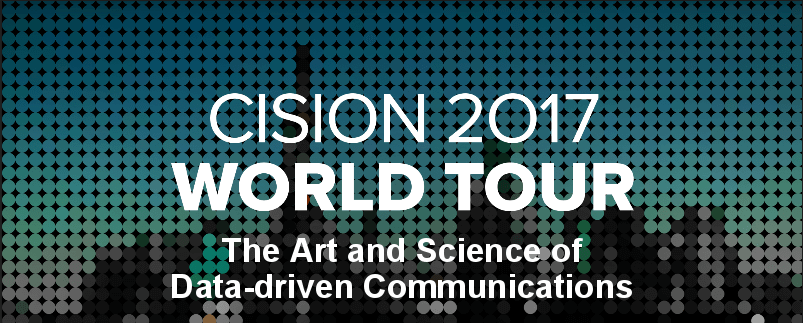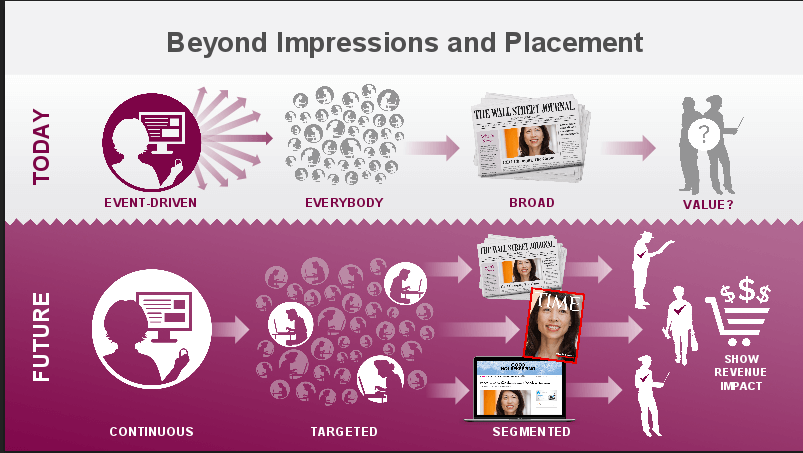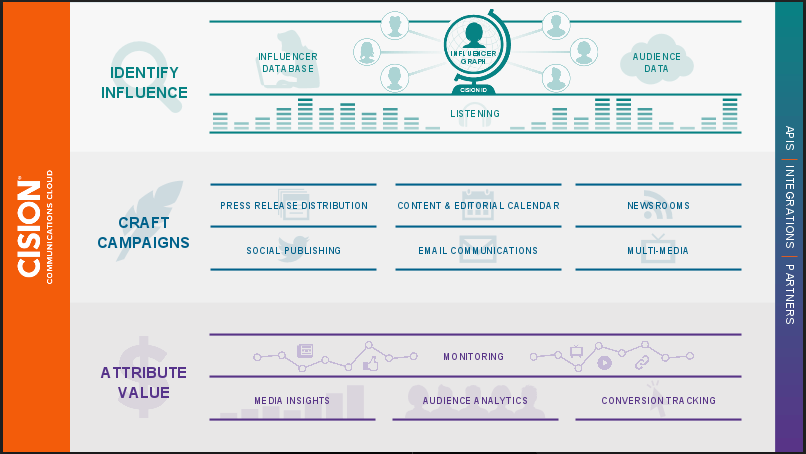 A couple of weeks ago, I had the opportunity to speak at the Cision World Tour, which began in Chicago.
A couple of weeks ago, I had the opportunity to speak at the Cision World Tour, which began in Chicago.
Chris Lynch, the Cision chief marketing officer, kicked off the event and he was exceptionally good.
He recognized where the PR model has flaws, and what the industry can do together to strengthen our weaknesses.
Not one to get up on stage and bore his audience with a product demo, Chris spent his time discussing the art and science of data-driven communications.
Be still my beating heart!
A data-driven nerd focused on the enhancing the PR model?
A speaker can’t get much better for me!
And now I get to share his wisdom with you.
Earned Media Most Trusted, but Lowest Budgets
He started off by explaining the media paradox the current PR model puts us in.
Studies from Nielsen show earned media and consumer recommendations are the most trusted.
Yet…a Gartner study shows earned media receives the lowest budget.
On the flip side, paid media is the least trusted, yet it has the highest budget.
How does that make any sense?
Unfortunately, it doesn’t come as a surprise.
PR traditionally has been very difficult to measure and communicators.
By nature PR pros, are not numbers people, which means we don’t tend to be data-driven.
When you combine those two things, it’s incredibly difficult to get a seat at the proverbial table when business strategy is discussed and approved.
We have to, of course, use technology, data, and measurement to prove the worth of our PR model.
If we could just begin to show a tiny bit of business result, I can almost guarantee the chart above would begin to shift.
Beyond Impressions and Placements
Chris, as you would imagine, has a solution for us.
Yes, even those of you who are not numbers people and cannot understand data.
He suggests we flip the PR model.
For as long as most of us can remember, PR has been event-driven.
Which means if there is a new product launch, a new hire, a new service offering, a trade show attendance, a speaking engagement, or an event, we get to do our jobs.
We sit down, we open Cision, and we begin to pull together a media list of everyone who might be interested in our event-driven news.
Then comes the media materials, the approvals, and we get it all sent out.
We send it to anyone and everyone, with the hopes that someone will be interested.
But, as Mitch Joel once said in a podcast, “Targeting everyone will get you no one. But if the pitch is individualized and targeted to me, it works 100 percent of the time.”
While we sit around and wait for someone to write our story, we also wait for the next event.
And then we wonder why executives or clients get frustrated and begin to lose patience.
Flip the PR Model
What if, instead, we flipped the PR model and used communications in continuous and fluid way?
This is what the PESO model advocates—you use owned and earned media at the center of your communications program, versus waiting for events to trigger your activities.
And, instead of pulling a list of thousands of journalists and influencers out of Cision, you build a list that is very targeted and specific.
A list of those who are actually interested in your information, your contributed content, your behind-the-scenes videos, and all of the other content you produce.
While you might have a list of only 10 people to target, you now have the opportunity to have 100 percent success.
And, I don’t know about you, but I’d MUCH rather have 100 percent success with 10 people than zero success with thousands.
The PESO model has owned media at the center, with earned media supporting it.
The Cision model suggests a slight tweak.
Identify, Craft, Attribute
First, define your influencers—journalists, social media big whigs, bloggers, and industry thought leaders.
Then listen to what they discuss, pay attention to what the produce, and watch the conversations they have with their circles of influence.
This will allow you, then to pull together audience data that defines your campaign creation.
All of your content should be driven by what your defined influencers want and need.
This allows you to customize by influencer, which is far more successful than creating one campaign that revolves around you.
Once it’s all out there in the wild and your influencers are helping you reach your goals, you can begin to attribute value.
And prove your worth.
Once you begin to do that, the budget will move from paid media to the more trustworthy and effective media types.
What do you think?


